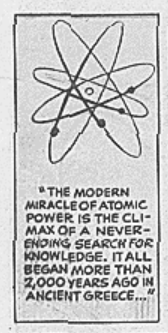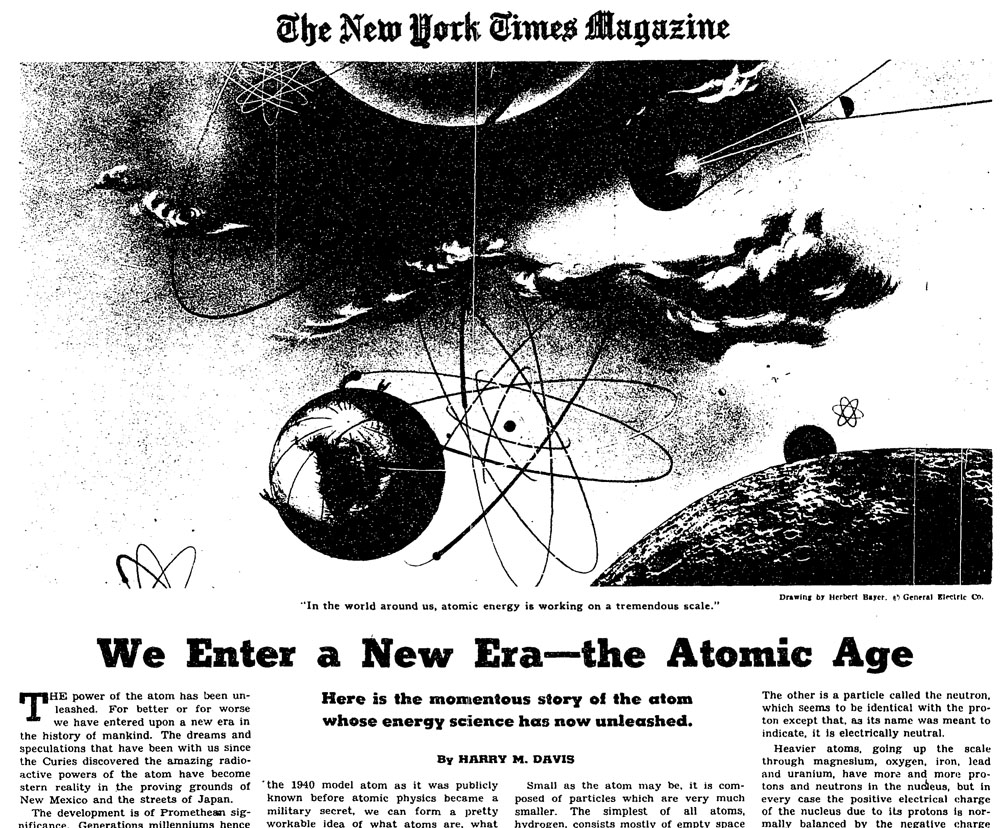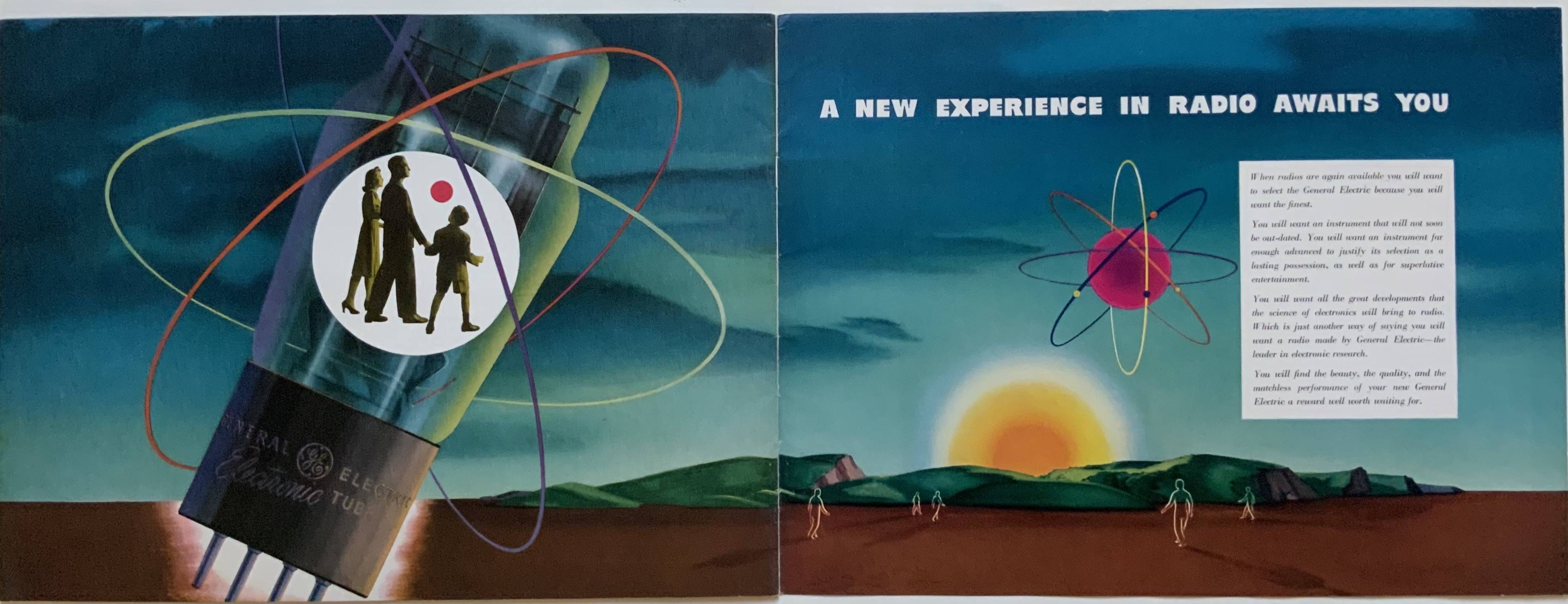I'm adding this as an extended comment, taking advantage of the answer modality. It changes the subject a little, since the "atomic" fib is the 500lb gorilla in the room: The electron pseudo-planetary orbits of your iconic picture, indelibly connected in the popular imagination with nuclear energy, not chemistry!, have little to do, conceptually, with nuclear physics, energy, or weapons. Perhaps a separate question on the fib would attract interesting answers...
The symbolism for "atomic energy", "atomic bomb", "atomic age", etc... so misnamed and established in the popular consciousness after the Smyth Report (1945) and the establishment of the United States Atomic Energy Commission (1946), deliberately avoid "nuclear" as a summary of the fundamental processes involved. (Sure, you split the atom after splitting its nucleus, but the dominant processes and energy scales are those of nuclear, not atomic physics.)
Here is the report .
I have heard the story, but lack documentation, that H dW Smyth deliberately avoided the darker "nuclear" in his report, in favor of "atomic" which had a benign image in popular science reporting of the 20s and 30s, and importantly, the science/fiction & fantasy circles of that time. Whether they used the planetary picture avatar there, I don't know, but it is in the purview of your question.
So, perhaps, the not-quite-ancillary question is of the actual adoption of that planetary symbol (classical as opposed to quantum mechanical, so deeply misleading even for atoms, to boot!) to paradoxically represent and summarize nuclear processes and energy in the popular imagination and memory.
Many nuclear programs all over the world have followed suit and blithely (mis)use that symbol in emulation... The silliest explanation is the one the Bing chatbot provided, that "atomic" refers to the "atomic nucleus": as though "atomic" is the crucial qualifier, lest one contemplated cellular nuclei?
Addendum : I have recently found
The original title of the report, before it was published in book form, was Nuclear Bombs: A General Account of the Development of Methods of Using Nuclear Energy for Military Purposes Under the Auspices of the United States Government, 1940–1945. The word "nuclear" was changed to "atomic" because while the former was favoured by physicists, it was not in common use by the general public at that time. This was the title used on the copyright certificate. The book was copyrighted to Smyth but issued with the statement that "reproduction in whole or in part is authorized and permitted". Groves had the report copyrighted by Smyth in order to prevent someone else from copyrighting it. [pp 183-185. Smyth, Henry DeWolf (Spring 1976). The "Smyth Report". Princeton University Press. pp. 173–190. ISSN 0032—8456].








